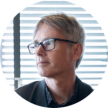
OUR THOUGHTSTechnology
Product validation through continuous discovery
Posted by Gareth Evans . Nov 01.23
The tools and techniques to make sure we’re building the right thing are available to any enterprise. Are you really making use of them?
Google invented the design sprint way back in 2010 as a means of validating what’s built. Yet more than a decade on, it’s still surprisingly rare to find organisations that use this proven way of working and embed it into a habitual, everyday practice as part of continuous product improvement.
This is especially the case in Aotearoa where the transition from project to product thinking is still at a relatively early stage. Few enterprises have invested in building the teams to do it and fewer still consider their team’s work as part of Value Stream integration focused on delighting customers. Without effective product validation efforts and continuous product improvement based on rapid prototyping methods, you’re wasting effort, disappointing customers and diverting resources away from things that might deliver much more value.
The process of building the right thing (as opposed to building the thing right), is a critical skill for any organisation – from startups pivoting towards value, disrupted cash cows that have lost their innovation gene and any other business mired in complacent entropy and mediocrity. And the good news is that validation processes have evolved, become more accurate and are simpler to adopt.
It’s never been easier to identify customer value signals in new concepts, business models and feature ideas. It can be done both qualitatively and quantitatively in short cycle times, often without the need to engage external agencies and gift them a mountain of money.
We can do all these things…
- Introduce growth hacking techniques to scrape and interpret data into insight, then use it to identify our audience and grab their attention by many marketing means
- Build, tear down and rebuild landing pages in hours to test many journeys
- Engage funnel managers to build personalised, multi-variant messaging and any number of teaser steps to entice audiences into consideration and purchase. These same methods can be used to validate the appeal of yet-to-be-built features
- Use social media platforms to target very specific audiences and then capture their behaviour with customer insight tools and real-time, in-depth analytics
- Rapid, in-person research using any form of survey, paper prototypes and/or rapid prototyping methods in apps like Sketch or Figma
- It is also true that the skilled 'researcher' understands the deep psychology of latent customer needs, wants and desires and can structure their interactions to maximise this insight
- Finally, we know a lot more about RICE, Cost of Delay, ‘Value Filtering’ and how we might decide what to build first
All of this helps us discern value from noise, dodge the bias and build clear blue water between us and the competition. In progressive businesses, these validation processes are used extensively by small teams of people to increase the chances that the overall Value Stream is building the right things for customers. And they’re doing it in low-cost rapid cycles in tandem with delivery sprints. You can do this too.
At HYPR, we call this capability ‘Continuous Discovery' and it’s a critical component of your holistic customer value delivery system. We can help you create one aligned team with continuous flow of the highest value output. How does that sound?
More Ideas
our thoughts
AI-powered software migration: how one team transformed a six-week challenge into a four-week success story
Posted by The HYPR Team . Jul 14.25
When Olly Brand, CTO of The Collecting Group, first attempted to upgrade their PHP codebase from version 7.3 to 8.3 in 2023, it seemed like an insurmountable challenge. Four developers worked for six weeks but ultimately had to abandon the effort due to competing business priorities.
> Readour thoughts
Teaching AI in an age of uncertainty: the ethical dilemma of educational responsibility
Posted by Daniel Walters . Jul 11.25
As educators in the technology space, we’ve always understood the multiplier effect of our work. When you teach a developer, you’re not just impacting one person – you’re influencing every line of code they’ll write, every system they’ll build and every user they’ll ultimately serve.
> Readour thoughts
Product ops for AI initiatives: moving beyond AI mandates
Posted by Bianca Grizhar . Jul 07.25
Organisations are increasingly considering incorporating AI into products and services, driven by the desire to stay ahead of technology and not be left behind their competitors.
> Readour thoughts
Mastering Model Context Protocol (MCP): how to give your AI Code Assistant tools to use
Posted by Davin Ryan . Jun 30.25
We are regularly reminded that large language models (LLMs) will revolutionise how we work, automate complex tasks and enhance productivity across industries.
> Readour thoughts
Platform engineering principles that actually work for teams
Posted by Reuben Dunn . Jun 24.25
Lately, I’ve been thinking about the concept of principles. I coach basketball based on principles rather than set plays and, like basketball, platform engineering represents complex adaptive systems.
> Read